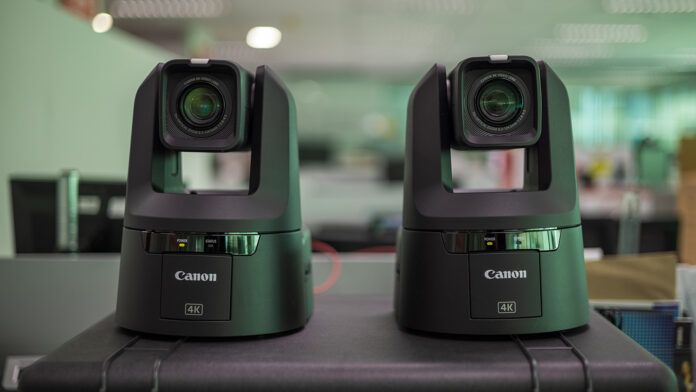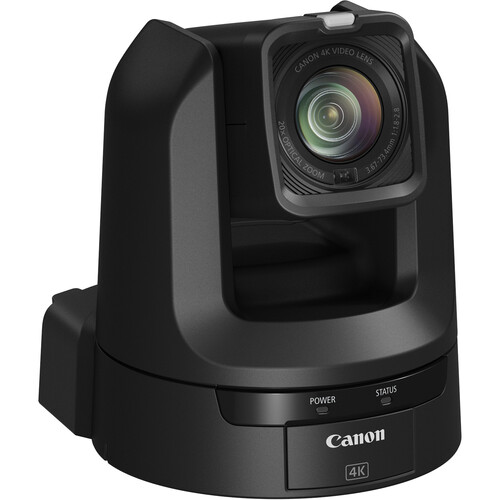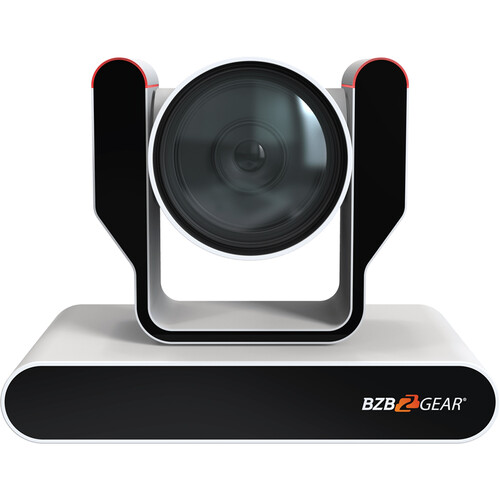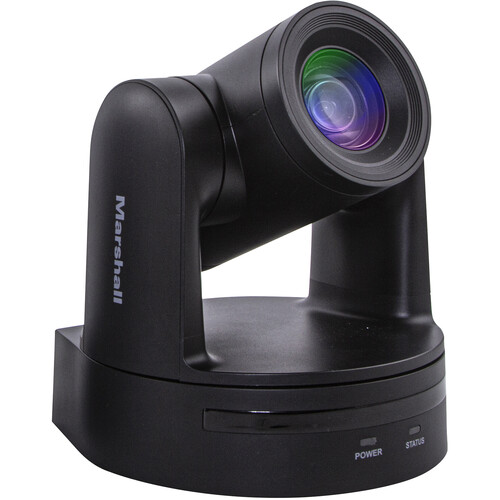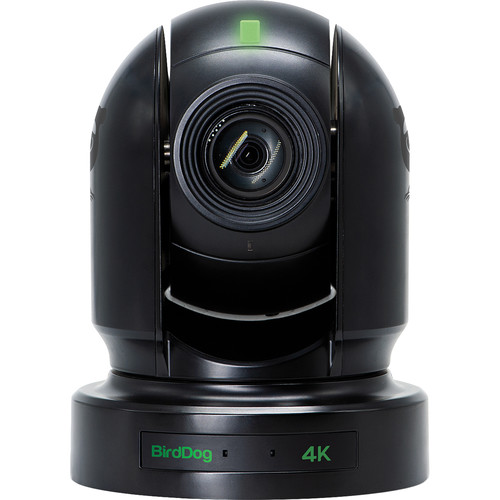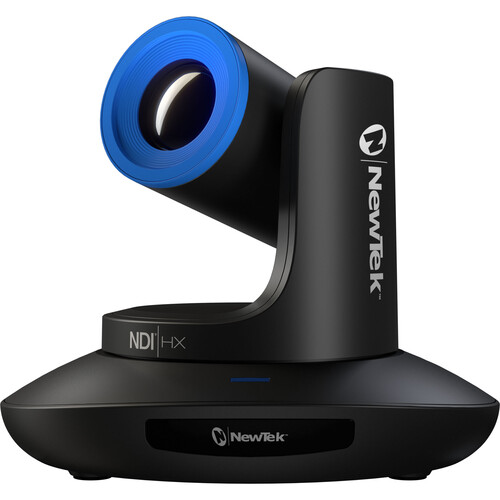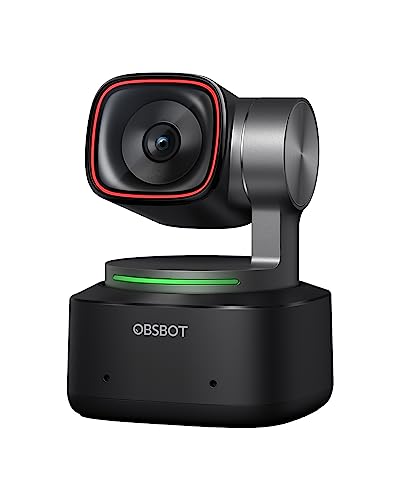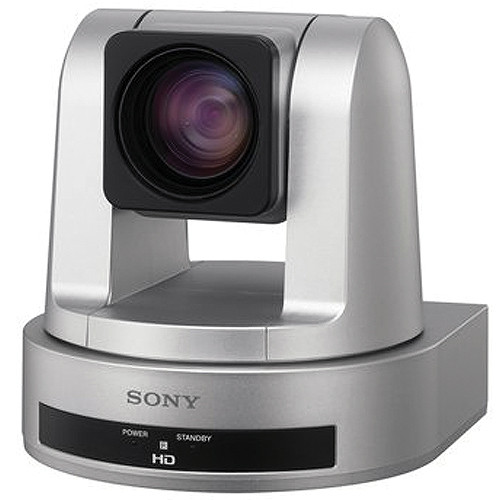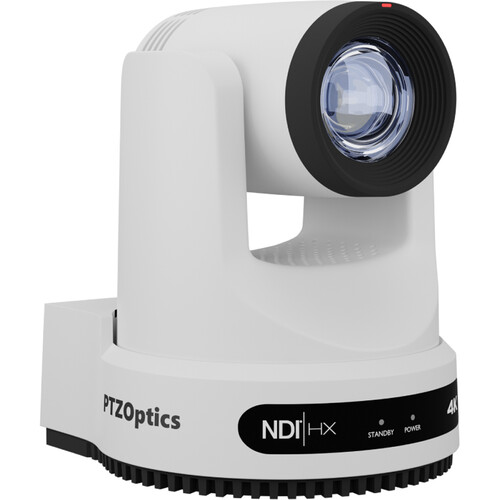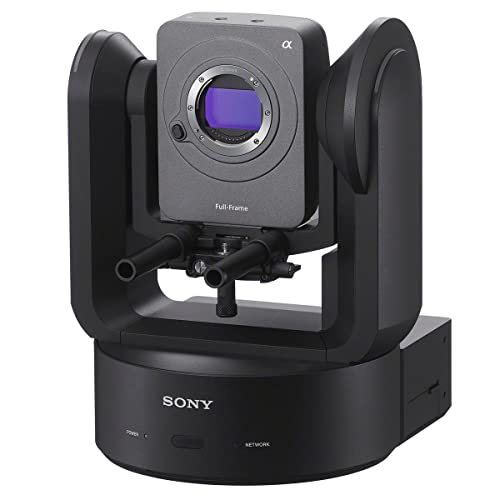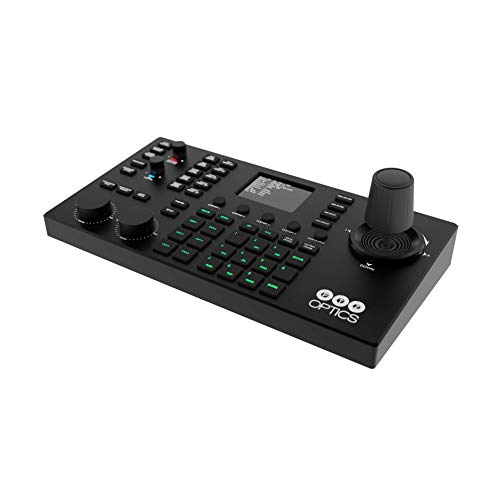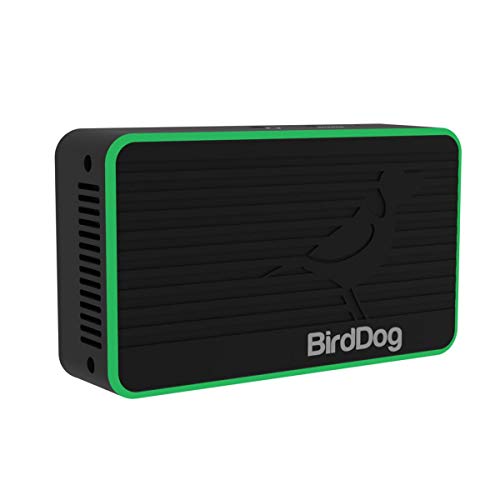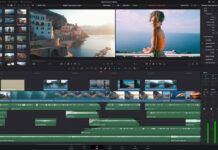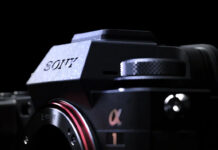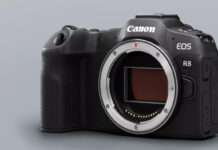PTZ cameras can provide a ton of flexibility for camera operators. Not only can they capture stunning overhead shots, but they are also easy to transport, simple to control remotely and can allow you to operate multiple cameras at once.
In this guide, we will outline the special considerations you should examine before purchasing a PTZ. However, let’s first look at the best PTZs broken up by their use cases.
Best HD PTZ
Canon CR-N300
The Canon CR-N300 PTZ is a great PRZ that produces quality video. Inside, the CR-N300 features a 1/2.3” CMOS sensor and the DIGIC DV 6 image processor. While this paring can shoot 4K UHD video at 30 frames per second (fps), it delivers undeniably beautiful Full HD video at 60 fps. This is because the camera supports oversampling HD processing thanks to its 4K-capable sensor. Unequivocally, it provides the best Full HD PTZ-shoot footage currently on the market.
Additionally, the CR-N300 has a 20x optical zoom lens and a wide viewing angle of 65.6 degrees. Plus, it utilizes Hybrid AF, combining contrast autofocus (AF) technology with phase-difference AF tech. Canon CR-N300 PTZ is a steal for HD shooters.
Best 4K PTZ
BZBGear BG-ADAMO-4K
If you have a bigger budget, the BZBGear BG-ADAMO-4K is an excellent option for high-quality livestream broadcasts. It comes with a slew of video connection options and delivers impressive 4K video at 60 Hz resolution. Not only that, this PTZ can store up to 1 TB of video footage with the Micro SD Card writer. So, if you don’t have access to a connection, you can start recording right away.
Its lens is just as impressive. It has an algorithm-based autofocusing camera that snaps into focus. Plus, it features 3D noise reduction tech that works with the camera’s low-noise CMOS sensor, ensuring that its image is clear. If you’re looking for a great PTZ camera, look no further than the BZBGear BG-ADAMO-4K
Best budget PTZ
Marshall Electronics CV605
The Marshall Electronics CV605-U3 Compact PTZ USB/HDMI camera features a 1/2.8-inch CMOS sensor, which allows it to capture video up to 1080p 60 fps. The camera can output via its low-latency 3G-SDI port or through IP streaming using its LAN port, offering a versatile range of connectivity options. Additionally, you can set it up with just one Ethernet cable, which handles video, audio and control using PoE.
However, it’s important to note that this camera has a limited optical zoom range, offering up to a 5x optical zoom. However, it still features a wide 85-degree angle of view and a 10x digital zoom. The camera also comes with a variety of other handy features, such as multiple control protocols, support for multiple network protocol support
So, if you’re looking for a quality PTZ while still staying within your budget, you should consider the Marshall Electronics CV605.
Best long zoom PTZ
BirdDog EYES P400
If you’re in need of a highly-capable zoom PTZ, the BirdDog EYES P400 is a strong choice. With it, you can capture 4K 30 fps video with a quick f/2.0 20x optical zoom lens, a 12x digital zoom and 30x SRZ (Super Resolution Zoom) — all in 4K and 40x SRZ in HD.
Inside, the BirdDog EYES P400 houses an 8.5MP Sony CMOS backlit sensor and supports simultaneous 6G-SDI, HDMI, and NDI output. The BirdDog EYES P400 offers the best zoom experience of any PTZ on the market right now.
Best NDI PTZ
NewTek NDI HX PTZ3
The NewTek NDI HX PTZ3 puts NDI at the forefront. It can send video over the network with practically no latency. At the same time, it uses less bandwidth than previous NDI protocols. Better yet, it also features SDI and HDMI outputs for local monitoring.
It features a 20x optical zoom lens with a horizontal field of view of 3.2 to 60 degrees and a one-chip 1/2.86-inch CMOS sensor. It can operate on a single Ethernet cable for HD video up to HD video at 60 fps. The NewTek NDI HX PTZ3 gets our picks as the Best NDI PTZ.
Best USB PTZ
OBSBOT Tiny 2
The OBSBOT Tiny 2 AI-Powered PTZ 4K Webcam is a 4K device equipped with software for remote operation of functions like pan, tilt and zoom. You can control the OBSBOT Tiny 2 with hand gestures or your voice as well. However, unfortunately, the gesture controls weren’t great when we tested them. But we did love the PTZ’s AI tracking system, which is capable of auto zooming.
Regarding its image quality, the OBSBOT Tiny 2 features a 1/1.5-inch CMOS 50-MP sensor. This allows the PTZ to capture up to 4K video in 30 FPS. Alternatively, you can opt to shoot in 1080p 60 FPS if you so choose.
According to OBSBOT, the Tiny 2 has a four-times faster-focusing system than the previous model. Additionally, the Tiny 2 comes with Dual Native ISO and can capture two images with the two native ISOs separately and simultaneously. OBSBOT Tiny 2 is a USB PTZ camera worth taking a look at.
Best HDMI PTZ
Sony SRG-120DH
The Sony SRG-120DH is a great conferencing camera with a 12x optical zoom, a 12x digital zoom and a 71-degree horizontal viewing angle. It houses a 1/2.8-type Exmor CMOS sensor at its core and has Sony’s View-DR dynamic range enhancement, making it capture quality images in back-lit environments. What’s great about this PTZ camera is it’s easy to operate. You can output video up to 1080 60 fps over HDMI, allowing for simple setup.
There are also pan, tilt, and zoom controls, all operatable via an included remote control. The Sony SRG-120DH is a nice option for those needing a good conferencing camera that’s painless to set up on the fly.
Best SDI PTZ
PTZOptics Move 4K 20X
PTZOptics Move 4K 20X is a 4K PTZ camera that features a wide field of view and a fast frame rate — 60 frames per second. You can also use this PTZ to auto-track subjects and focus on any person in the frame. So, as long as your subject says within the frame, they will stay in focus.
Additionally, the camera’s 20X lens allows you to get up close to your subject and still frame the shot properly. It also allows you to capture details that you might not have been able to capture otherwise.
So, if you need an SDI PTZ, consider the PTZOptics Move 4K 20X.
Best large sensor PTZ
Sony FR7
Sony’s FR7 Cinema Line PTZ Camera delivers cinematic, full-frame footage perfect for broadcasts and live events. The camera’s highlight feature is its large image sensor. Its sensor provides 15+ stops of dynamic range, captures up to UHD 4K 120 FPS video and supports livestreaming. It also has a fast Hybrid and Real-time Eye AF system and can record either in-camera or output video via 12G-SDI or HDMI.
The Sony FR7 includes a built-in electronic ND filter, offering variable ND filtration from 1/4 (two stops) to 1/128 (seven stops). This allows you to compensate for exposure changes without affecting your depth of field. Also, the PTZ utilizes S-Cineton color science, allowing you to capture cinematic-looking colors. The FR7’s versatility and power make it an unbeatable option for video professionals with the budget, standing out as the best large-sensor PTZ camera entry.
Best PTZ controller
PTZOptics SuperJoy
The PTZOptics SuperJoy is a top-notch choice for controlling PTZs. With the ability to control up to 28 PTZ using NDI, IP or serial, the PTZOptics SuperJoy is ahead of its market competitors. You can control all 27 PTZ cameras using its joystick and buttons, grouping them into groups of four. Additionally, the PTZOptics SuperJoy supports NDI, VISCA, VISCA-over-IP, Pelco-P, and Pelco-D protocols over IP and serial RS-232, RS-422, and RS-485 communication.
So, if you want an easy way to control a ton of PTZs, we can’t recommend the PTZOptics SuperJoy enough.
Best NDI converter
BirdDog Flex 4K
For connecting your NDI PRZ to the network, the BirdDog Flex 4K is a great pick. It’s a compact NDI interface for HDMI sources and supports up to UHD 4K 30 fps video or 1080 60 fps video. It supports a variety of power options, such as PoE or 12V power.
The BirdDog Flex 4K weighs just under five ounces and features a single Ethernet port. We can’t recommend the BirdDog Flex 4K enough.
What is a PTZ camera?
A Pan/Tilt/Zoom (PTZ) camera operates with either a hardware and/or software remote control for panning, tilting and zooming. Oddly enough, some cameras can lack one of these features, like having a zoom, yet they are still called PTZ cameras. PTZs are often referred to by other names such as robotic cameras, conference cameras and robo cams.
What are some advantages of a PTZ camera?
- PTZ cameras allow one operator to control multiple cameras at the same time.
- PTZs can provide reliable control and smooth moves while broadcasting/streaming.
- PTZs can easily obtain great overhead shots.
- PTZ setup is quicker, and the camera may only require running one lightweight cable.
- PTZ cameras allow for a much smaller footprint since you can operate them remotely.
Who can benefit from a PTZ camera?
PTZ cameras provide great live shots due to their movement abilities and placement advantages. Because of this, it might be an optimal choice for applications like stage productions, corporate events, houses of worship and even outdoor productions. When using only PTZ presets with an IR remote, streaming can be ideal for use in classrooms, corporate or government boardrooms. Once a PTZ camera is installed and presets are programmed, that PTZ can be operated by someone with no technical skills. IR control is also great for cooking, crafting, or building overhead shots.
What to look for when buying a PTZ camera?
At first glance, it may seem like an easy task to choose the right PTZ camera for your productions. However, there are many variables to consider. Issues that are too difficult or time-consuming to change later should be a major consideration. This includes:
- Lack of direct streaming
- Lack of telephoto capability
- Noisy image
- The highlight/shadow/color of the PTZ doesn’t match the other cameras in use
You can address all of this by finding a camera that is well suited to your needs.
Is matching cameras important?
If you want to mix your PTZ with other cameras, you’ll want the color, highlight and shadow to match fairly well, or it will make for a jarring transition when you cut between cameras. Sometimes, focusing all of the cameras on the same white object and white balancing the cameras can be a simple solution. For greater accuracy, use a large chip chart — camera chart — to auto white balance. Then fine-tune the color, highlight and shadow with manual controls. Keep in mind that many lower-end PTZ cameras have no manual controls. This can make it impossible to match the PTZ camera with other cameras or even with other PTZ cameras. Additionally, using cameras with similarly sized image sensors will make things easier. For example, to match a 2/3-inch HD ENG camera to a PTZ, use ½-inch or 1-inch UHD PTZ cameras. UHD cameras tend to be easier to balance than HD cameras.
Why does sensor size matter?
Typically, the larger the image sensor on the camera, the less noticeable noise you’ll get in your video. Larger sensors also tend to have better color reproduction. This can allow you to gain up — amplify — the video from the camera in low light with less impact on image quality. The drawback to this is that larger sensors have a broader field of view. This can lead to the need for larger focal lengths. For example, a 1-inch sensor needs a 200 mm focal length lens to get roughly the same field of view as a ½ sensor with a 100 mm focal length.
What is the difference between optical and digital zoom?
Optical zooms use the camera lens to increase magnification, which has little effect on image quality. Digital zooms push in on the image and effectively reduce resolution causing the picture to look grainy. For example, if you have a 1920 x 1080 — HD — camera and use a 2x digital zoom, you’re now looking at a 960 x 540 image.
Why do some cameras list zoom speed?
Zoom speed is important if you want or need to change focal lengths rapidly. It seems that only the cameras with faster pan and zoom will list these speeds.
How do I determine how much zoom I really need?
To ensure that the zoom range — wide to telephoto — of your PTZ is adequate for your shooting location, you’ll need to have some idea of the types of shots you want.
“I want to explore all of my possibilities.”
Stand where you would like to install the PTZ, and using a camera that you already own, frame up the widest and tightest shots you think you’ll need, taking note of the focal length for each and changing lenses if necessary. Now, find the crop factor of the camera you just used. The crop factor is the sensor’s difference in size in relation to 35 mm still film — full-frame 35 mm. For example, Micro Four Thirds sensors have a 2X crop factor; so, if your shots were at 10 mm and 200 mm, this means the 35 mm equivalent to the zoom range you want is around 20 mm x 400 mm. It’s important to note that crop factors are often approximated to the actual image sensor size. To be safe, add a 20 percent cushion to your calculation which would bring the example above to be 16 mm x 480 mm. Now that you know the 35 mm equivalent zoom range, you’ll want to look for cameras that meet or exceed that requirement.
“I only care about headshots.”
For this, you can utilize a focal length equation to determine your lens needs. To do this, you will need to know the sensor size (horizontal), the distance to the subject and the Horizontal Field of View (HFOV) for your headshots. While the sensor size and distance to the subject are easy to determine, figuring out the HFOV takes a bit more work.
To get your HFOV:
- Stand in front of a mirror.
- Use a tape measure or yardstick and measure where you’d want to see your head framed. Think vertically, top to bottom of your eyes, above the head to mid-chest level or somewhere in between. Write down the metric measurement — convert if needed. Now, take that vertical measurement and multiply it by 1.78 (because 1.78:1 is the aspect ratio for HD/UHD, often called 16 x 9). This sum is your desired HFOV.
Now, use this formula to determine your required focal length:
FL= (SS*D)/HFOV
- FL = focal length
- SS = sensor size — 36 mm for 35 mm equivalent or the actual camera sensor horizontal length
- D = distance to the subject
- HFOV = Horizontal field of view
What are my controllers’ options and considerations?
There are three basic types of controllers: hardware controllers, software controls and IR remotes. Let’s look at the advantages and disadvantages:
For the fastest, most accurate control while live, you’ll want one hardware controller and monitor per camera. The monitors should be placed directly behind the controllers for quick, easy reference. The monitor should be the same resolution as the camera to aid in manual focus and see what you are sending to the program — IMAG, record, stream, etc. A multi-view monitor makes it harder to see what camera you’re controlling. Additionally, if the camera windows drop below the camera’s resolution, it can make focus and other fine camera adjustments harder, if not impossible, to see.
Large hardware controllers can be used for multiple cameras and give you physical control over many camera settings making cameras easier to balance and set preset PTZ positions. They aren’t always as quick to control as having one controller per camera because you often have to select the camera before you can operate it.
Software controls are not ideal for moving pan/tilt/zoom while the camera is live. Software controls can give you complete manual control or no control to balance the camera(s). Additionally, Wi-Fi setups share the same chance of interference as most other wireless devices.
IR remotes are good if you’re in a small room and just switching between presets. When in a large room, it is also helpful to power up and check camera movement before your control cables are installed. The IR remote really isn’t a viable option for manual camera moves.
What about protocols?
If you’re working with existing hardware, software and networks, protocols can be critical. There are many different protocols utilized by PTZ cameras, such as NDI. The camera function isn’t affected by the protocol used. It’s only by what hardware and software you can use to alter the camera and streaming settings. Some cameras support multiple protocols; some protocols are used across different manufacturers, while some are unique to one specific brand.
What are important considerations for camera ports?
HDMI, SDI or high-quality streaming from the camera is necessary for better image quality for programs or recordings. While some PTZ cameras have SD slots, the compression used to record to the cards is often very high. The card function is better used as a backup if the record feed should falter. With this in mind, consider your production needs as we take a closer look at these common ports — and cables.
- SDI will often give you a video signal with less loss of color information and no image compression making the camera easier to balance. The cables are easy to run but don’t carry control or power.
- HDMI often carries less color information and no image compression. HDMI is limited to a 40-foot cable without amplification. It also doesn’t carry power or control.
- Wired Network (Cat 5, Cat 6, etc.) often compresses the image and decreases the color information to save on bandwidth. This makes camera balancing harder; however, higher and lower quality presets are often available. With PoE (Power over Ethernet) and IP streaming, one inexpensive cable can carry video, power and control at a distance of 300 feet. These cameras can often stream to a network with no other hardware. Check the camera specs because some network ports are for controls only when using a matching controller.
- USB often allows the camera to be recognized as a webcam by a computer; however, some only work with proprietary hardware or software. USB is limited in cable length without adapters but often carries power, video and control.
- RS-234, RS-485, etc. — these multi-pin ports are for control only. The cables can be fragile and expensive, making Cat 5 or higher network cable a better option unless no other control options are available. Cameras with these ports can sometimes be daisy-chained, but this is also not ideal because if the first camera in your chain goes down, you can lose control of all the cameras.
For the fastest setup and teardown of PTZs, you’ll want cameras with PoE and video over network cables paired with controller(s) that have video outputs if needed.
What is image flip, and do I really need it?
Inversion, ceiling mode and image flip allow upside-down video to appear right side up if the camera is mounted inverted. Even if your camera isn’t ceiling-mounted, mounting it upside down can make it easier to level, as most PTZ cameras don’t self-level.
Consider your options
There are a lot of options when shopping for a PTZ. Like cinema cameras, you should consider your entire production and post-production workflows, even your deliverables. You’re bound to make a great choice with all of this in mind.
Contributors to this article include Odin Lindblom, W. H. Bourne and the Videomaker Editorial staff.

